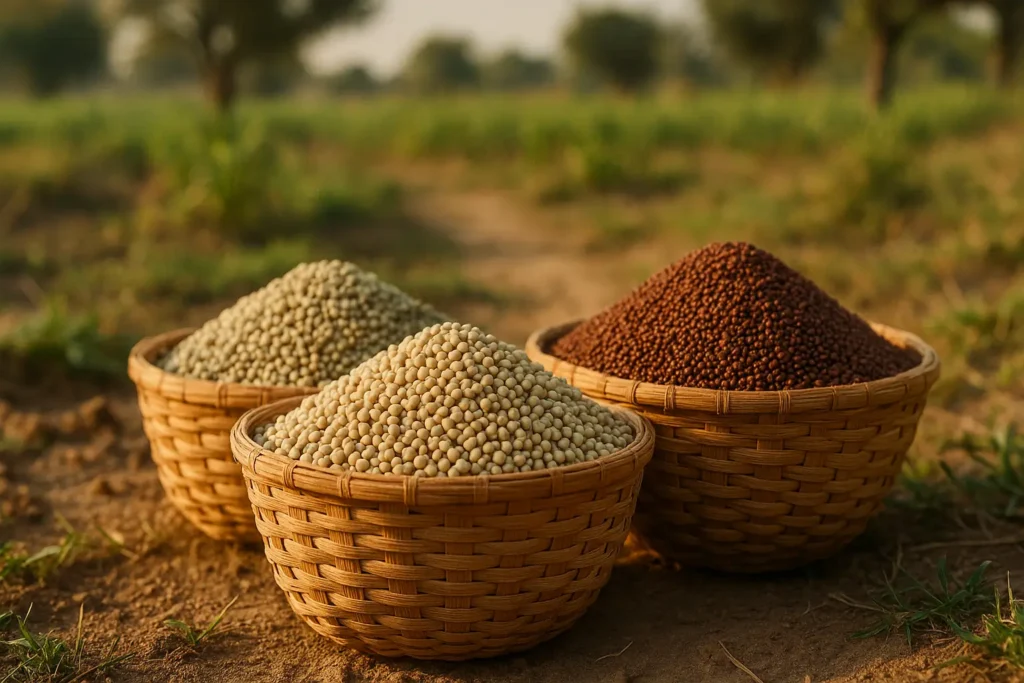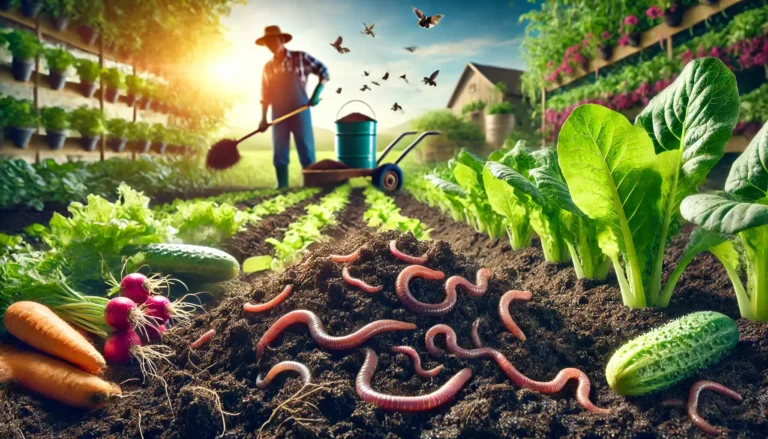
In a major policy announcement for the upcoming Kharif season, the Cabinet Committee on Economic Affairs (CCEA) chaired by Indian government has declared a hike in the Minimum Support Price (MSP) for 14 key crops for the year 2025-26.
This move is seen as a significant step toward safeguarding farmers’ incomes and promoting sustainable agriculture across the country.
This MSP hike 2025-26 is a major step to ensure better price guarantees for farmers and boost the cultivation of nutri-cereals, oilseeds, and pulses. Let’s break down what’s changed — and what it means for our Annadata.
Key Highlights of the MSP Hike 2025-26:

- Highest MSP hike: Nigerseed – ₹820 per quintal
- Paddy (Common) MSP up by ₹69 – now ₹2369/qtl
- Margins over cost of production: Bajra (63%), Maize & Tur (59%), Urad (53%)
- Encouraging Shree Anna/Nutri-Cereal cultivation
Here’s a quick comparison of the new MSP for Kharif season rates against last year’s values:
| Crop | MSP 2025-26(Rs./qtl) | 2024-25 MSP | Cost of Production(Rs.) | Increase(Rs.) |
|---|---|---|---|---|
| 1. Paddy(Common) | 2369 | 2300 | 1579 | +69 |
| 2. Jowar(Hybrid) | 3699 | 3371 | 2466 | +328 |
| 3. Bajra | 2775 | 2625 | 1703 | +150 |
| 4. Ragi | 4886 | 4290 | 3257 | +596 |
| 5. Maize | 2400 | 2225 | 1508 | +175 |
| 6. Tur(Arhar) | 8000 | 7550 | 5038 | +450 |
| 7. Moong | 8768 | 8682 | 5845 | +86 |
| 8. Urad | 7800 | 7400 | 5114 | +400 |
| 9. Groundnut | 7263 | 6783 | 4842 | +480 |
| 10. Sunflower | 7721 | 7280 | 5147 | +441 |
| 11. Soyabeen( yellow) | 5328 | 4892 | 3552 | +436 |
| 12. Sesamum | 9846 | 9267 | 6564 | +579 |
| 13. Nigerseed | 9537 | 8717 | 6358 | +820 |
| 14. Cotton (Medium staple) | 7710 | 7121 | 5140 | +589 |
Source : PIB India
Farmers’ Reactions
The increase has received a mixed response. While many farmers welcome the step as a cushion against fluctuating market prices, some experts believe that certain crops like sesamum and ragi deserved higher hikes considering the rising input costs.
A ground-level farmer, Ram Singh from Madhya Pradesh, said, “The MSP hike 2025-26 is a positive move, especially for soybean and sunflower cultivators. But with diesel, fertilizers, and labor costs going up, the margins are still tight.”
Top 5 Crops with Highest MSP Margin (%)
| Crops | MSP margin over cost |
|---|---|
| Bajra | 63% |
| Maize | 59% |
| Tur | 59% |
| Urad | 53% |
| NigerSeed | Rs. 820 |

Government’s Rationale
The government clarified that MSPs are based on recommendations of the Commission for Agricultural Costs and Prices (CACP), factoring in input costs, market trends, and demand-supply scenarios. The current revision ensures at least 50% margin over cost (C2) for all crops, with Bajra showing the highest margin at 77%.
Why This Hike Now?
- Crop diversification goal: Higher MSP for pulses and oilseeds may help reduce over-dependence on rice and wheat.
- Inflation buffer: Rising input costs (fertilizers, seeds) needed MSP revision to protect farm margins.
Reactions & Criticism
Farmer unions have welcomed the hike but demand MSP be made legally binding.Agri economists say that while this hike is good, timely procurement and payment are equally important.Experts warn that higher MSPs need to be backed by better infrastructure and storage systems to avoid wastage.
Impact on Agriculture
This increase in MSP is expected to:
- Encourage farmers to diversify into oilseeds and pulses
- Reduce dependence on imports of edible oils
- Ensure income stability for farmers in rainfed areas
- Promote climate-resilient crops like millet
- Higher oilseed MSPs may push edible oil inflation temporarily.
The announcement also aligns with the International Year of Millets, boosting their cultivation under the ‘Shree Anna’ campaign.
What is MSP & Who Decides It?
Minimum Support Price (MSP) is the guaranteed price at which the government buys crops from farmers, ensuring a safety net against market fluctuations.It is recommended by the CACP, and approved by the Cabinet Committee on Economic Affairs (CCEA), headed by the Prime Minister.
Final Thoughts
With this new MSP hike 2025-26, the Indian government aims to create a more resilient and rewarding agricultural economy. By boosting confidence among farmers, it hopes to ensure higher sowing in the upcoming season.
As always, the effectiveness of this policy will depend on timely procurement and awareness among farmers.
Stay tuned to Agriverses for the latest updates on Indian agriculture, MSP, sustainable farming, and policy news.






